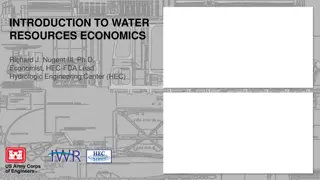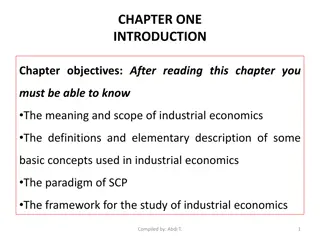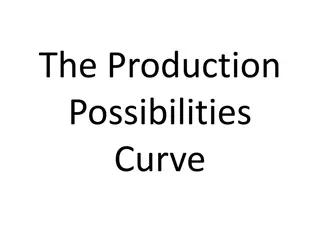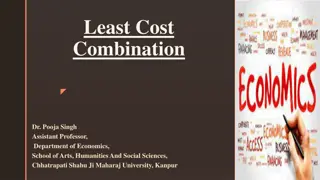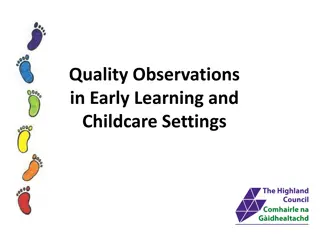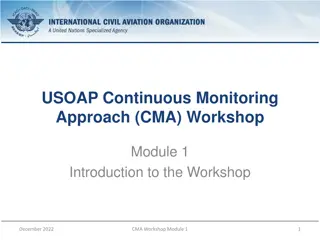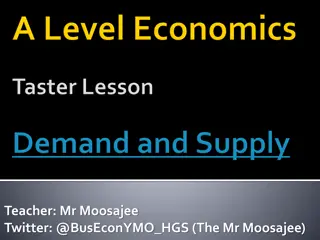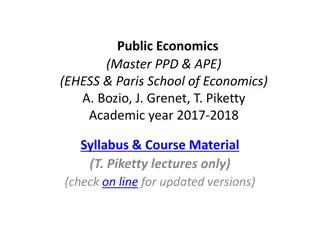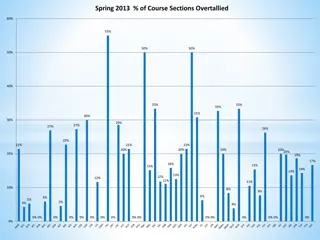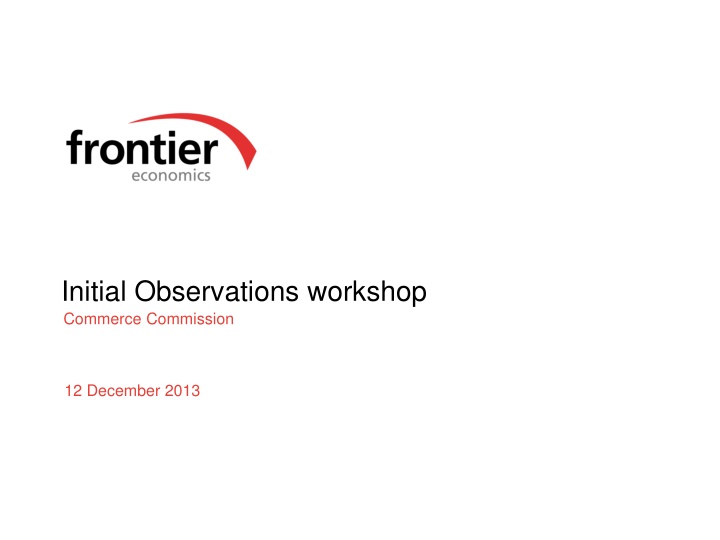
Forecasting Techniques and Utilizing EDB Forecasts in DPP Framework
Explore ways to enhance forecasting techniques without relying on EDB forecasts for use in a DPP framework, and consider utilizing EDB AMP forecasts to set DPP allowances. Key findings include the importance of network scale in opex modeling and potential additional drivers to be investigated. Options for making greater use of EDB forecasts within the DPP framework are also discussed, along with considerations for improving incentive schemes.
Download Presentation

Please find below an Image/Link to download the presentation.
The content on the website is provided AS IS for your information and personal use only. It may not be sold, licensed, or shared on other websites without obtaining consent from the author. If you encounter any issues during the download, it is possible that the publisher has removed the file from their server.
You are allowed to download the files provided on this website for personal or commercial use, subject to the condition that they are used lawfully. All files are the property of their respective owners.
The content on the website is provided AS IS for your information and personal use only. It may not be sold, licensed, or shared on other websites without obtaining consent from the author.
E N D
Presentation Transcript
Initial Observations workshop Commerce Commission 12 December 2013
Our brief We have been asked to consider two questions: 1. How might the current techniques used by the Commission to forecast EDBs costs be improved, for use in a DPP framework, without relying on EDBs forecasts? 2. Are there ways of utilising EDB AMP forecasts to set DPP allowances? We are investigating approaches that might be useful: For the next DPP reset; and Over the longer term 2 Frontier Economics
Forecasting techniques that do not rely on EDB forecasts Our approach 1. Review Commission s current econometric approach (to opex) Testing of alternative modelling techniques (e.g. panel vs. cross-sectional) Testing of alternative functional forms 2. Seek input from EDBs on alternative opex/capex drivers Mostly complete 3. Review Commission s 2013 Initial Observations paper 4. Identify what drivers, if any, should be investigated further 5. Test new candidate models with new/additional drivers Work has just commenced 3 Frontier Economics
Key findings so far and next steps Customer connections vs. indirect opex Initial findings The Commission s opex model performs fairly well Scale (line length & ICPs) seems to be the most important driver of opex (explains ~ 90% of the variation in the data) Estimated elasticities differ for small and large networks Modelling the time dimension (even with a few additional years of data) will not change the Commission s results materially Improvements may be possible EDBs have told us that the following additional drivers could be important: Next steps: Check robustness of data available Asset age/remaining expected life Test alternative opex models with additional drivers / EDB subsamples Network characteristics (e.g. rural vs. urban, underground vs. overhead) Investigate if a similar model may be built to forecast capex How are major anticipated step changes in expenditure to be taken account of? 4 Frontier Economics
Options for making greater use of EDB forecasts Options constrained by high-level DPP framework 1. Detailed evaluation of forecasts conventionally used in Great Britain and Australia Detailed evaluation of entire forecast not feasible under DPP But could have regard to EDB forecasts wrt discrete step changes if well-justified 2. Compare track records of different EDBs AMPs against actuals over multiple years and put weight on those that have tended to be most consistently accurate But: Need to account for EDBs awareness that their forecasts would be used to set revenue No guarantee that actual expenditure reflects efficient levels 3. Prioritised treatment / rewards (akin to Ofgem s fast track ) for well-justified expenditure plans But such twin tracking seems incompatible with the DPP/optional CPP process 4. Incremental Rolling Incentive Scheme (IRIS) would help ensure more equal incentive factors, which would reduce incentives to inflate base year expenditure But will not itself improve the reliability of EDB forecasts 5. Menu regulation based on Ofgem s (and Ofwat s) Information Quality Incentive (IQI) mechanism 5 Frontier Economics
Menu regulation IQI Key idea Regulated businesses are profit-maximisers and will respond to incentives Companies are offered a menu of payoffs that depend on: Accuracy of forecasts A company is always best off submitting accurate forecasts Efficiency Once forecasts are submitted, a company is always better off if it can beat its forecast Possible applications in NZ An IQI mechanism seems a very promising way to address the Commission s concerns about relying on EDB forecasts There is empirical evidence from Great Britainthat IQI has altered companies behaviour Is relatively low cost to run so would fit within a DPP framework Requires time for companies to adjust their behaviour We think a shadow run of the IQI at the next price reset would be useful (with aim of full implementation by 2020) Interim options for using EDB forecasts might be possible for the next reset 6 Frontier Economics
Frontier Economics Pty Ltd in Australia is a member of the Frontier Economics network, which consists of separate companies based in Australia (Brisbane, Melbourne & Sydney) and Europe (Brussels, Cologne, London and Madrid). The companies are independently owned, and legal commitments entered into by any one company do not impose any obligations on other companies in the network. All views expressed in this document are the views of Frontier Economics Pty Ltd. 7 Frontier Economics
FRONTIER ECONOMICS PTY. LTD. MELBOURNE | SYDNEY Frontier Economics Pty Ltd, 395 Collins Street, Melbourne, Vic 3000 Tel. +61 (0)3 9620 4488 Fax. +61 (0)3 9620 4499 www.frontier-economics.com 8 Frontier Economics

